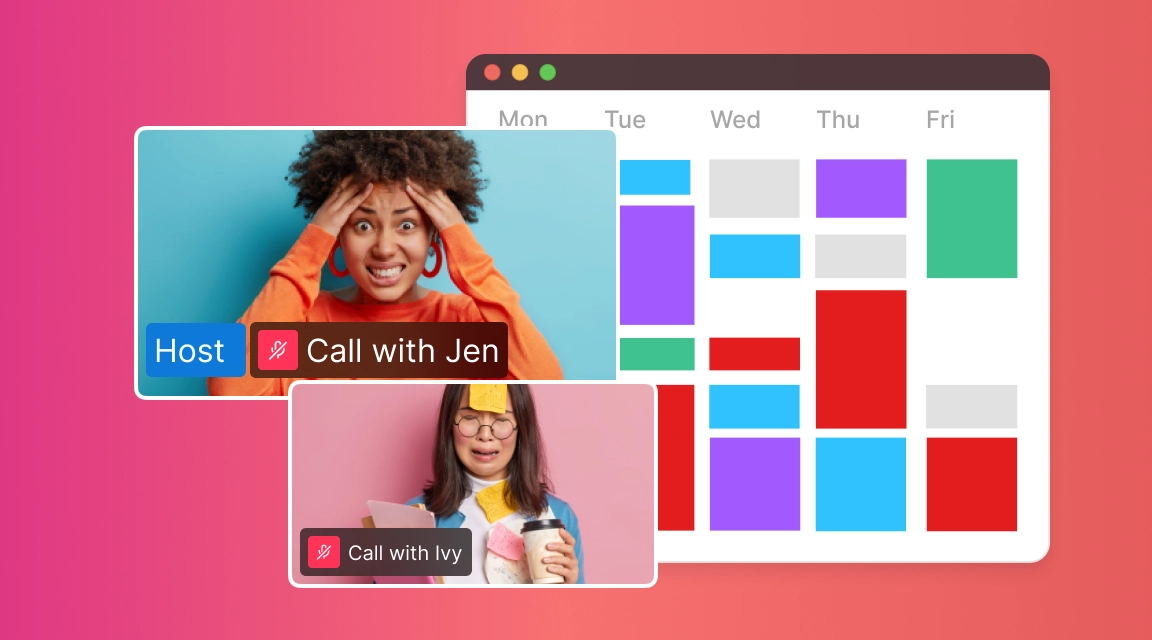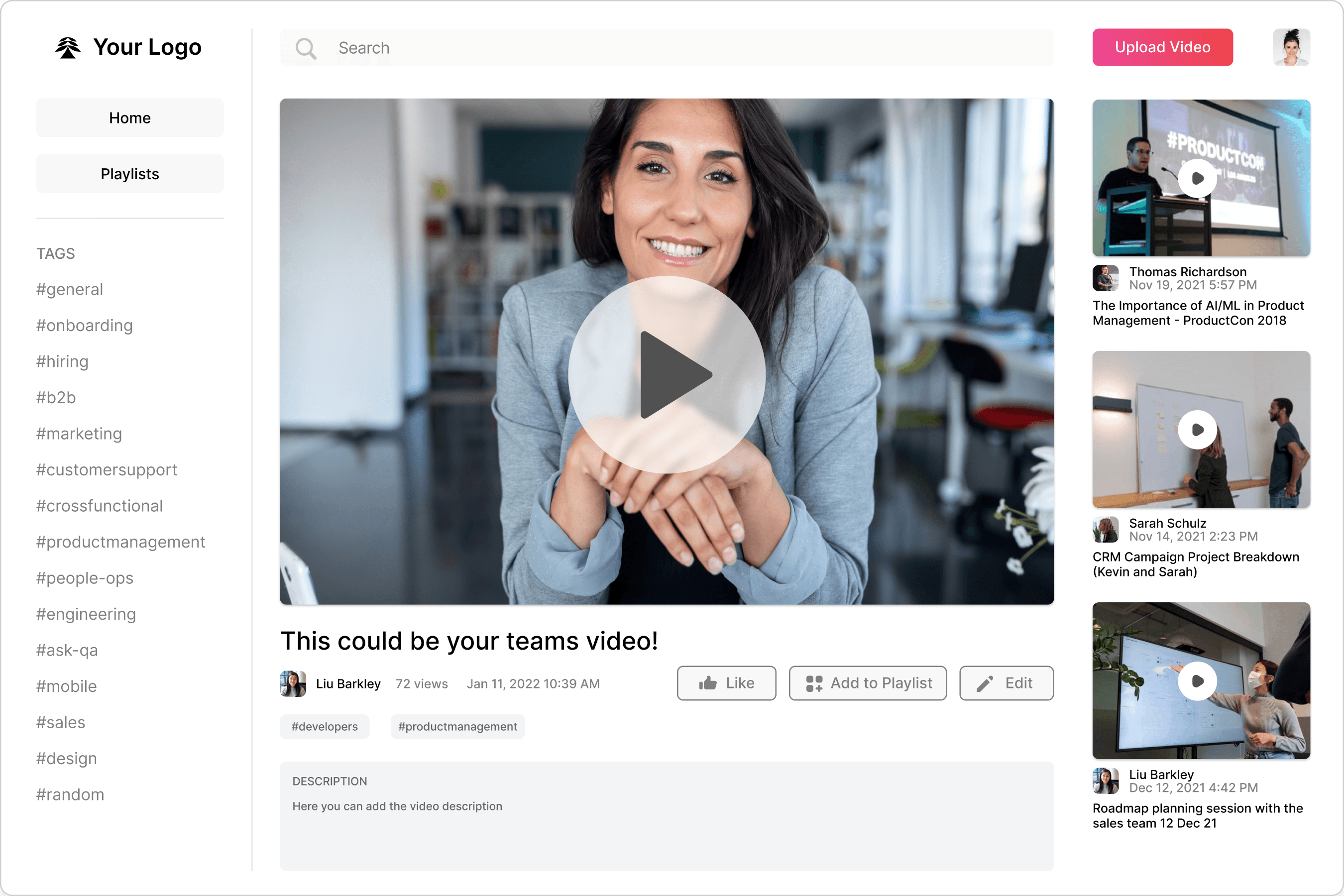I think you’ll agree with me when I say:
It’s really hard to stay productive when you have too many meetings.
In fact, 71% of managers said that their meetings are unproductive and inefficient and 67% of meetings are seen as „failures“.
Today I am going to show you exactly how to stop the meeting madness, reduce the number of meetings and increase productivity - for you and your team.
This is the same process that helped me and my team reduce our meetings over one year:
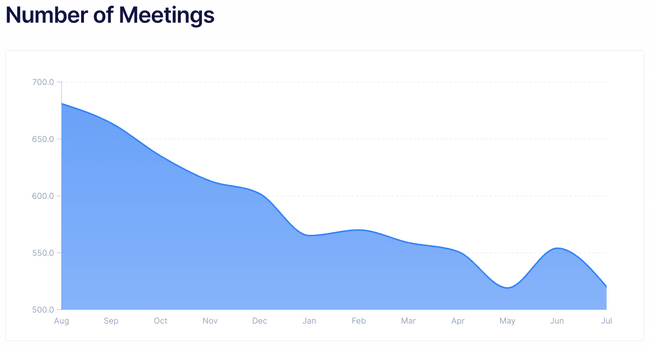
In this time the engagement scores skyrocketed from 62% to 91%. We also reached all of our business goals!
So whether you are a productivity beginner or seasoned pro, you’ll love the powerful tips in this guide.
Let’s dive right in.
1) Clear Purpose and Specific Goals
How many times have you left a business meeting thinking: „This meeting could have been an email“?
I feel you.
That’s most likely because the meeting lacked purpose and clear goals.
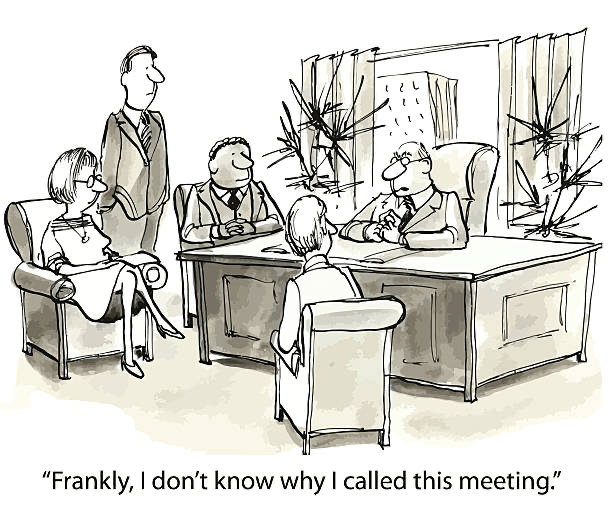
To have effective meetings, you need to start with the WHY:
- Why is this meeting happening?
- What is the desired outcome we want to achieve?
- Why is it important to achieve the outcome?
A clear purpose reminds everyone that they’re in the meeting for the same reason.
Try out meeting purpose statements. Here is an example:

2) Clear Meeting Agenda
According to Doodle’s 2019 State of Meetings report having a clear agenda is the second most important element to successful meetings.
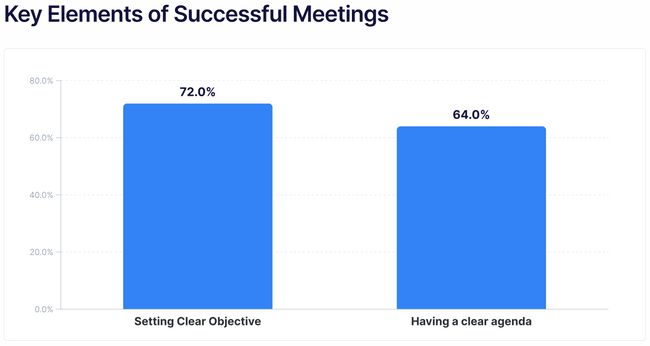
As a leader, lead by example and make sure you’re sharing the agenda as early as possible.
Your agenda allows all participants to prepare for the meeting. It sets clear expectations of what will and won’t be discussed.
The meeting agenda shows you’re considerate of your team’s time.
Ideally, each agenda item has a dedicated amount of time, a clear topic owner, and clear next steps.
Group agenda items by priority, type, or by item owner to create an efficient flow in the meeting.
To create the right expectations make it obvious which type of agenda items you have:
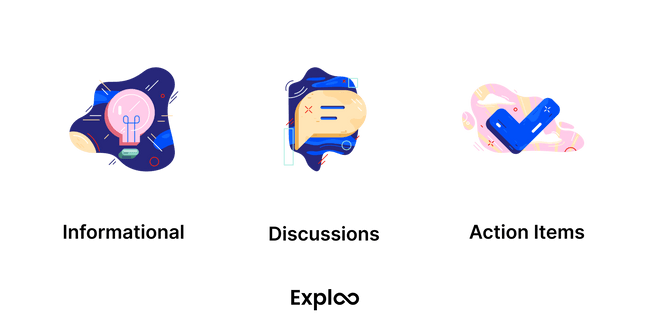
Make sure to stick to your agenda, to its priorities, and to the set time boxes.
Drifting away from the agenda is one of the top reasons why bad meetings happen:
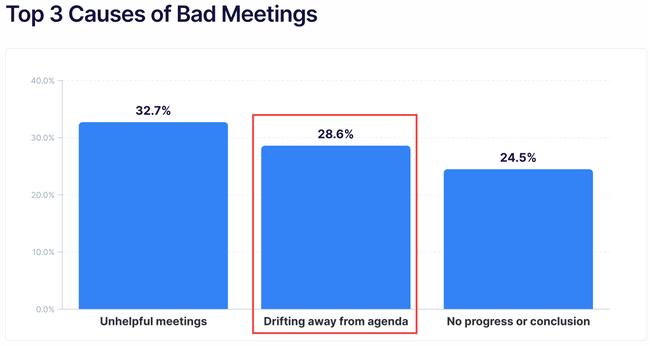
So here is your match plan to a great meeting agenda:
- Define the goal of the meeting: Set an achievable goal for your meeting.
- List all topics that you want to discuss: Agenda items should be questions instead of phrases so everybody knows exactly what you are going after.
- Identify decision-making agenda items: Mark items where you need to make a decision.
If possible, assign team members and add due dates to each action item to keep the accountability high.
If everything on your meeting agenda can be discussed asynchronously, it is better to cancel the meeting and share your message in an email or a video using Exploo.
3) Use Meeting Templates
I am a huge fan of templates.
Here is an example of my 1-on-1 meeting agenda template I have been using for more than a hundred 1-on-1 meetings:
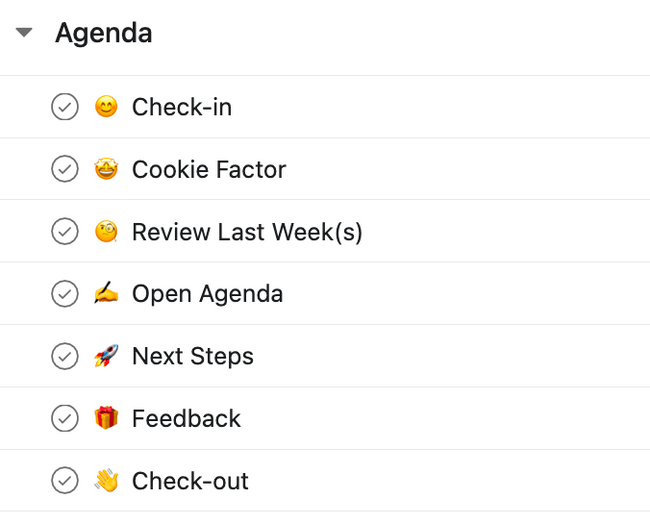
By using meeting agenda templates you will save a lot of time and create consistency across all your meetings (1-on-1s, daily standup, team meetings, etc.)
With a template, you make sure not to forget any of the items mentioned before, reduce cognitive load and create habits in your team.
4) Clear Roles and Responsibilities
Many teams waste their time and energy on discussing unimportant topics because they did not assign clear roles and responsibilities.
Especially in flat hierarchies people often feel hesitant to assign clear responsibilities and want to find consensus in the whole team.
It sounds good at the beginning but it leads to the situation where people cannot move forward with important projects before they get all opinions.
This creates too many meetings and exhausts the team.

One way to solve this is by assigning a Directly Responsible Individual (DRI) for each project. The DRI is responsible to take all decisions on a given project and involving other people if needed.
You can go one step further by using a Responsibility Assignment Matrix (RACI Matrix) for your team or specific projects.
By doing this you’ll always know who is responsible for a specific task, who needs to be held accountable, and who needs to be consulted with and informed.
This will reduce cognitive and meeting load even further as fewer questions arise and you avoid unnecessary discussions.
5) Shorter meetings
Parkinson’s law says that “work expands to fill the time available for its completion.”
Some also interpret it as: „The more time you allow for a task, the less effort you’ll put in“.
So, if you have one hour to go through the agenda items, you will take the full hour to complete the tasks and will still be rushing at the end of the day.

You would be surprised how much you can achieve in a 15 to 30 min call if you time box the discussions.
Try to limit most of your meetings to a maximum of 30 minutes.
6) Smaller meetings
The bigger the meeting gets the less inclusive and effective it will be.
Large meetings often are less productive, have a lot of repetition, and are energy-draining.
In large meetings people feel bored, might switch into passive listening, or check out of the conversation.
Meetings with a lot of participants are SUPER DUPER expensive.
Calculate the cost for the meeting including the salaries and the number of participants. You will be shocked.
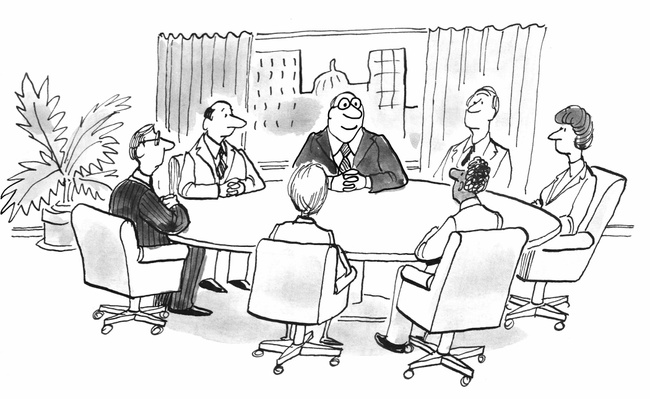
Additionally, 31% of people claim that irrelevant meeting attendees even slow down the progress.
Always aim for the minimum number of attendees to get the job done.
Make meetings optional if this helps, but generally try not to waste the time by inviting people that might not be needed in the meeting.
7) Only call in for meetings if it is needed
Meetings take you away from the work you are doing.
Jason Fried (CEO, Basecamp) summarized it like this:
Meetings aren’t work. Meetings are places to go and talk about work that you’re supposed to be doing later.
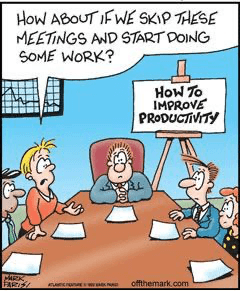
Calling in for meetings means taking time from your team to work on the important stuff.
Try to answer those questions:
- Do you need this to be a meeting?
- Can this also be communicated via email or an Exploo video?
8) Efficient Check-In Rounds
Check-ins are an important ritual that will help you strengthen the relationships within your team and make the meetings more inclusive.
Especially in today’s era of virtual zoom calls, meetings can feel awkward. Check-ins will help you see your teammates as whole human beings and get a good connection for the meeting.
Now why does this help to reduce the number of meetings?
It is tempting to jump straight into work topics.
But once the conversation becomes more challenging, people often start to misunderstand each other.
A check-in round is a great way to connect and set a positive tone for the rest of the meeting.
9) Have a Great Facilitator
Meeting do not run themselves - even within teams with perfect chemistry.
Without a facilitator, meetings run longer, lose sight of the goals, and can become energy-draining to attend.
Without meetings facilitators, you will have too many meetings.
A good facilitator does not make any decisions but helps the participants to go through the agenda in time and reach the desired outcome.
Ideally, the facilitator is seen as someone neutral that helps balance power dynamics in the team and can resolve conflicts.
10) Have a Great Note-Taker
Many people have Meeting FOMO (Fear of missing out).
If they do not attend certain meetings, they think they will fall behind the latest information and decisions.
Good meeting notes keep the number of meetings down as people do not need to attend all meetings anymore.
Therefore, always assign a notetaker before or at the beginning of the meeting. A note-taker will listen actively and document the meeting.

The note distribution is as important as the notes themselves. Share your notes where your team works, e. g. on Slack, etc.
It is also a good practice to share your meeting notes in the description fields of your meeting recordings in Exploo.
11) Effective Check-Out Rounds
In check-out rounds, you give everyone the chance to comment on the meeting.
No discussions are allowed. No back-and-forth.
People should only take 30 seconds or less so can close most check-out rounds in a few minutes.
Check-out rounds give everyone the chance to have the last word, be mindful about the meeting and what happened.
It is a great way to learn whether people liked the meeting or wasted time.
It helps you to make better decisions on future meetings and is a powerful tool if you have too many meetings.
12) No-Meeting Thursday
To avoid too many meetings lots of companies nowadays have No-Meeting-Days.
The company or team chooses one day in the week when there are no meetings.
This ensures everybody gets some flow time, a concept pioneered by Mihály Csíkszentmihályi (you can watch his TED talk here ).
It’s super simple and something that can help your team tremendously.
Fewer disruptions lead to more team members being productive.
13) Monitor the Meeting Load and Perception
To effectively manage your schedule you need to monitor the effectiveness and perception of your meetings.
If you are having a meeting because “everyone else is doing it” it is a good sign that you waste your time.
For example:
- “Engineering teams are supposed to hold daily standups.“
- “Remote teams are supposed to have bi-weekly virtual happy hours.“
- „Marketing teams are supposed to have weekly report meetings.“
Says who?
This is the formula for having too many meetings.

It’s so easy to get used to a certain rhythm, even when it is inefficient. Get rid of legacy meetings no one needs.
Monitor not just the business meeting load, but also the perception of the meetings inside your team.
Do people generally dislike being in a specific meeting? If so, the meeting will not be effective.
Maybe it is time to change the setup or even cancel the whole meeting.
14) Reduce Meeting Fragmentation
Research shows that it takes 25 minutes to return to focus and productive work after a significant interruption.
Additionally, managers and employees don’t operate on the same schedules.

For example, in engineering teams, developers typically plan their workloads in units of half a day, whereas managers work in hours.
There’s an inherent misalignment when it comes to meetings and the fragmentation of calendars.
To avoid having too many meetings and more focus time you need to make sure your meetings are not scattered around the whole week.
15) Meeting Recordings
Guess what? If you have too many meetings, recordings can help!
Sharing meeting recordings are a great way to provide transparency on important discussions, increase knowledge sharing and reduce the number of meetings.
By making recordings available in the team, you address attending all meetings.
Or you could replace some of your sessions with one-minute self-recorded videos.
Do not invite for a long meeting, but share a short video quickly on Exploo with your team and enable them to watch it asynchronously.
Exploo provides a YouTube-like video portal and helps you create a culture of transparency, enables your team to become a knowledge powerhouse, and reduces the number of meetings for everybody.
Conclusion
I strongly believe that you can say goodbye to too many meetings if you stick to those recommendations.
Now I would like to hear from you:
Which of the presented strategies work for you?
Did you ever try out video sharing to reduce the meetings in your team?
Either way, I would like to get in touch with you and introduce you to how Exploo can help you get more productive.

